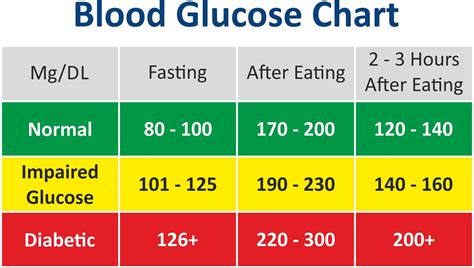Maintaining healthy blood sugar levels is crucial for individuals with diabetes. Diabetes, a chronic condition characterized by the body’s inability to properly regulate blood glucose levels, can lead to a variety of serious health complications if not managed effectively. The goal for diabetics is to keep their blood sugar levels as close to normal as possible to prevent long-term damage.
Understanding Blood Sugar Levels
Blood sugar levels are measured in milligrams per deciliter (mg/dL) and are typically checked using a glucose meter. The American Diabetes Association (ADA) provides guidelines for blood sugar levels for individuals with diabetes. For people with diabetes, the ADA recommends the following blood sugar targets:
- Before meals: 80-130 mg/dL
- After meals (1-2 hours): Less than 180 mg/dL
It’s important to note that these are general guidelines, and your healthcare provider may set different targets for you based on your age, other health conditions, the type of diabetes you have, and how long you’ve had diabetes.
Factors Affecting Blood Sugar Levels
Several factors can influence blood sugar levels, including:
Diet: The type and amount of food you eat, particularly carbohydrates, can significantly impact blood sugar levels. Foods with a high glycemic index can cause a rapid increase in blood sugar.
Physical Activity: Regular physical activity can help lower blood sugar levels and improve insulin sensitivity. However, intense exercise can sometimes cause a temporary rise in blood sugar levels.
Medications: Certain medications, including those used to treat diabetes, can affect blood sugar levels.
Stress and Sleep: Stress and lack of quality sleep can raise blood sugar levels and disrupt the body’s natural hormonal balance.
Other Health Conditions: Certain health conditions, such as polycystic ovary syndrome (PCOS), Cushing’s syndrome, and pancreatitis, can affect blood sugar levels.
Managing Blood Sugar Levels
Effective management of blood sugar levels involves a combination of lifestyle modifications, monitoring, and medication (if prescribed). Here are some strategies for maintaining healthy blood sugar levels:
Healthy Eating: Focus on whole, unprocessed foods like vegetables, fruits, whole grains, lean proteins, and healthy fats. It’s also important to be mindful of carbohydrate intake and choose foods with a lower glycemic index.
Regular Physical Activity: Aim for at least 150 minutes of moderate-intensity aerobic exercise, or 75 minutes of vigorous-intensity aerobic exercise, or a combination of both, per week. Additionally, incorporate strength-training activities at least twice a week.
Monitoring Blood Sugar: Regularly check your blood sugar levels as recommended by your healthcare provider. This helps in understanding how different factors affect your blood sugar and in making informed decisions about your diet and physical activity.
Medication Adherence: If you’re prescribed diabetes medications, take them as directed by your healthcare provider. Don’t stop or change your medication without consulting your provider.
Stress Management: Engage in stress-reducing activities like yoga, meditation, or deep breathing exercises.
Quality Sleep: Aim for 7-8 hours of sleep per night to help regulate blood sugar levels and overall health.
Complications of Unmanaged Blood Sugar Levels
High blood sugar levels over a prolonged period can lead to serious complications, including:
Heart Disease and Stroke: High blood sugar can damage blood vessels and the nerves that control the heart. The risk of heart disease, heart failure, and stroke increases.
Kidney Damage (Nephropathy): High blood sugar can damage the blood vessels in the kidneys over time, impairing their ability to filter waste from the blood.
Nerve Damage (Neuropathy): Excess sugar can injure the walls of the tiny blood vessels that supply the nerves, leading to numbness, pain, or a tingling sensation, especially in the hands and feet.
Eye Damage and Blindness: High blood sugar can damage the blood vessels in the retina, potentially leading to blindness.
Foot Damage: Nerve damage and poor blood flow can lead to foot sores and infections that, if left untreated, can result in amputations.
Technologies and Innovations in Diabetes Management
Advancements in technology have made managing diabetes easier and more effective. Some of these innovations include:
Continuous Glucose Monitors (CGMs): These devices provide real-time glucose readings, helping individuals with diabetes manage their levels more efficiently.
Insulin Pumps: Small, wearable devices that deliver precise doses of insulin throughout the day.
Smart Insulin Pens: Some insulin pens can track dosing and calculate insulin needs based on glucose levels and meal size.
Apps and Online Platforms: Many digital tools are available to track blood sugar levels, monitor medication adherence, provide nutritional advice, and offer support from healthcare professionals.
Conclusion
Managing blood sugar levels is a multifaceted process that requires a comprehensive approach, including dietary changes, regular physical activity, medication adherence, and consistent monitoring. By understanding the factors that influence blood sugar levels and utilizing available technological advancements, individuals with diabetes can better manage their condition, reduce the risk of complications, and improve their quality of life. It’s essential to maintain open communication with your healthcare provider to adjust your management plan as needed and to address any concerns or questions you may have.
What are normal blood sugar levels for someone with diabetes?
+For individuals with diabetes, the American Diabetes Association recommends the following targets: before meals, blood sugar levels should be between 80-130 mg/dL, and after meals (1-2 hours), levels should be less than 180 mg/dL. However, these targets can vary based on individual factors and should be discussed with a healthcare provider.
How often should I check my blood sugar levels if I have diabetes?
+The frequency of checking blood sugar levels depends on the type of diabetes, the treatment plan, and the individual’s lifestyle. Typically, individuals with type 1 diabetes or those using insulin may need to check their blood sugar levels more frequently (up to 4-6 times a day) compared to those with type 2 diabetes who are not on insulin.
Can I still eat sweets if I have diabetes?
+While it’s generally recommended to limit intake of sweets and sugary foods, it’s not necessary to completely eliminate them from your diet. Moderation is key. It’s essential to consider the carbohydrate content and how it may affect your blood sugar levels. Choosing desserts with less added sugar and incorporating them into your meal plan with the guidance of a healthcare provider or a dietitian can help manage blood sugar levels.

